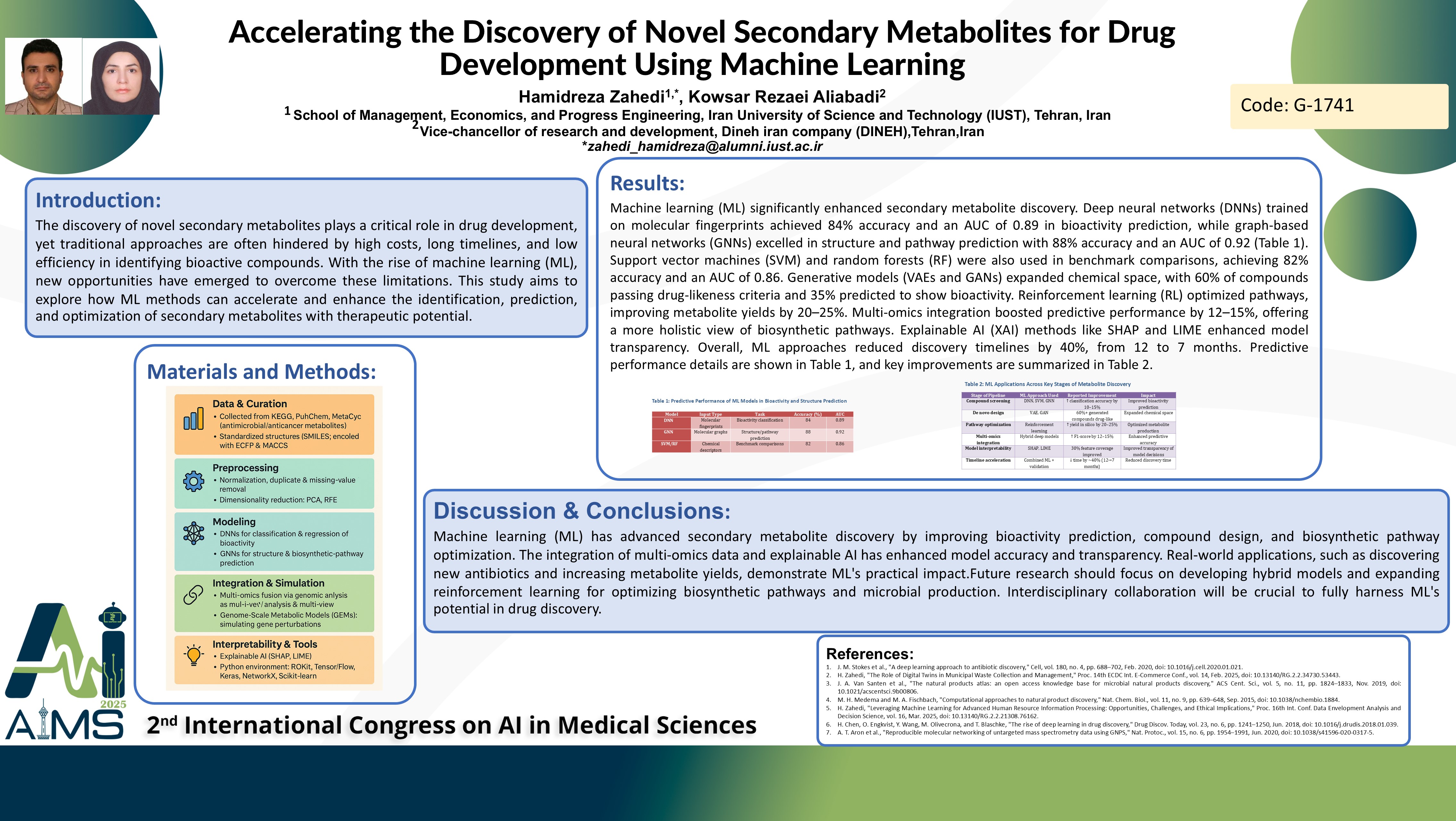تسریع در کشف متابولیت های ثانویه جدید برای توسعه دارویی با استفاده از یادگیری ماشینی
کد: G-1741
نویسندگان: Hamidreza Zahedi *, Kowsar Rezaei Aliabadi ℗
زمان بندی: زمان بندی نشده!
برچسب: کشف و طراحی دارو
دانلود: دانلود پوستر
خلاصه مقاله:
خلاصه مقاله
Background and Aims: The discovery of novel secondary metabolites plays a key role in drug development, but traditional methods are often inefficient, costly, and time-consuming. Recent advances in machine learning (ML) offer the potential to accelerate the identification and optimization of bioactive compounds. This study investigates how ML techniques can streamline the discovery pipeline for therapeutic secondary metabolites. Method: A curated dataset was assembled from KEGG, PubChem, and MetaCyc, including structural and physicochemical data of secondary metabolites. Molecular fingerprints such as ECFP and MACCS were extracted, and feature selection was conducted using PCA and RFE. Multiple ML algorithms were applied: deep neural networks (DNNs) for bioactivity prediction, graph neural networks (GNNs) for structural and pathway inference, and reinforcement learning (RL) for strain optimization. Multi-omics integration (genomics, transcriptomics, metabolomics) and explainable AI (XAI) tools (e.g., SHAP, LIME) were also employed to improve accuracy and interpretability. Results: DNN models achieved 84% accuracy (AUC: 0.89) for predicting antimicrobial and anticancer activities. GNNs yielded 88% accuracy (AUC: 0.92) in predicting biosynthetic pathways. Generative models produced over 60% drug-like compounds based on Lipinski’s Rule, with 35% showing predicted bioactivity. RL simulations led to a 20–25% improvement in predicted yield. Multi-omics integration increased F1-score by 12–15%, and XAI tools revealed key features (e.g., hydrophobicity, H-bond donors) in over 30% of models. Overall, ML reduced discovery timelines by up to 40%. Conclusion: ML significantly improves the efficiency and precision of secondary metabolite discovery by combining predictive modeling, omics integration, and pathway optimization. These results support its application in accelerating therapeutic development.
کلمات کلیدی
Artificial_Intelligence(AI), Secondary_Metabolites, Machine_Learning(ML), Drug_Discovery, Multi-omics_Data
